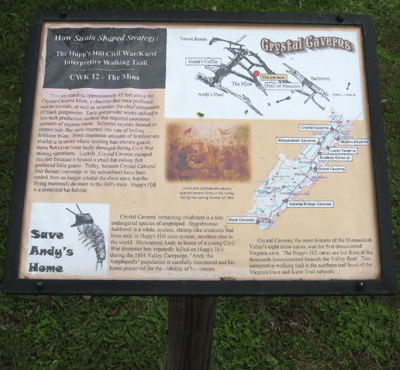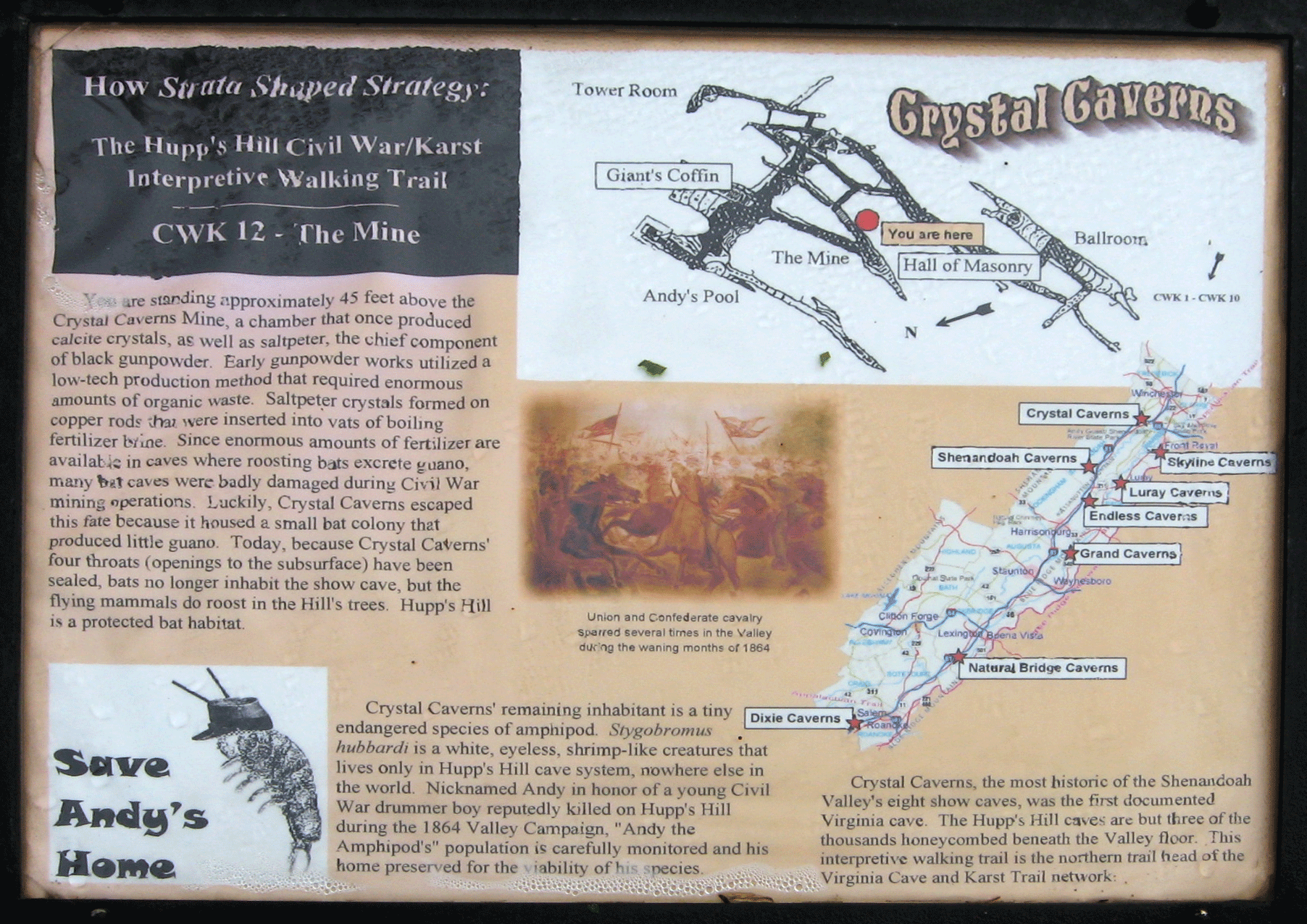Strasburg > Hupp’s Hill Civil War/Karst interpretive walking trail
The Mine trail marker CWK-12 is one of several along the walking trail at the Hupp’s Hill Civil War Park north of Strasburg, Virginia.

From the marker:
How Strata Shaped Strategy:
The Hupp’s Hill Civil War/Karst
Interpretive Walking Trail
CWK – 12 The Mine
You are standing approximately 45 feet above the Crystal Caverns Mine, a chamber that once produced calcite crystals, as well as saltpeter, the chief component of black gunpowder. Early gunpowder works uilized a lw tech production method that required enormous amounts of organic waste. Saltpeter crystals formed on copper rods that were inserted into vats of boiling fertilizer brine. Since enormous amounts of fertilizer are available in caves where roosting bats excrete guano, many bat caves were badly damaged during Civil War mining operations. Luckily, Crystal Caverns escaped this fate because it housed a small bat colony that produced little guano. Today, because Crystal Caverns’ four throats (openings to the subsurface) have been sealed, bats no longer inhabit the show cave, but the flyng mammals do roost in the hill’s trees. Hupp’s Hill is a protected bat habitat.
Crystal Caverns remaining inhabitant is a tiny endangered species of amphipod. Stygobromus hubbardi is a white, eyeless, shrimp-like creature that lives only in Hupp’s Hill Cae system,nowhere else in the world. Nicknamed Andy in honor of a young Civil War drummer boy reputedly killed on Hupp’s Hill during the 1864 Valley Campaign, “Andy the Amphipod’s” population is carefully monitored and his home preserved for the viability of his species.
Crystal Caverns, the most historic of the Shenandoah Valley’s eight show caves, was the first documented Virginia Cave. The Hupp’s Hill Caves are but three of the thousands honeycombed beneath the valley floor. This interpretive walking trail is the northern trail head of the Virginia Cave and Karst Trail network.
Photo Caption:
Union and Confederate cavalry sparred several times in the Valley in the waning months of 1864.

